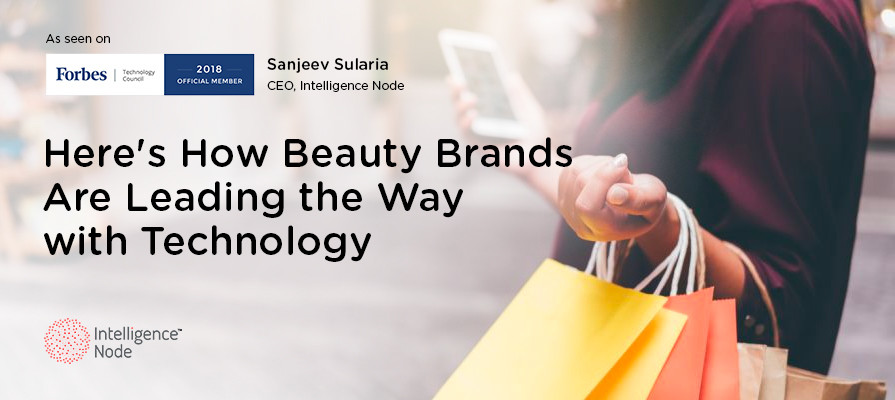This article was first published on Forbes on Apr 23, 2020, and is authored by Intelligence Node CEO Sanjeev Sularia in his capacity as a member of the Forbes Tech Council.
Recent retail news depicts a tale of two distinct fates: stores that are prospering, and those that are barely hanging on.
2019 was a tumultuous year in retail that included more than 9,100 store closures and the liquidation of longstanding chains like Forever 21, Payless ShoeSource, Barneys New York and Charlotte Russe. However, some retailers — including beauty brands like Sephora and Ulta — continue to grow. In fact, Sephora is preparing for its largest expansion ever in 2020. What’s more, sales in the global cosmetics industry are projected to hit just under $430 billion by 2022.
So, why are some retailers thriving while others are gasping for air? And what sets health and beauty brands apart from other retail categories?
Mind The Gap: Retail Differentiators
Smart use of technology and recognition of customer values is what shapes the performance of modern retailers. As the leader of an AI-powered retail insights and analytics company, I know that as consumer habits and beliefs evolve, so too should retail strategies.
To succeed in today’s competitive retail environment, businesses should focus on the following differentiators:
• Sustainability: Across almost every category of consumer packaged goods, sustainability is where the growth is. When analyzing purchasing data on the sales of over 71,000 products in 36 different categories of consumer packaged goods, the Center for Sustainable Business (CSB) found that roughly 50% of sales growth between 2013 and 2018 came from sustainably marketed products.
Therefore, it’s critical for modern retailers to prove to consumers that they make sustainability a priority in business operations, whether it’s sourcing only from sustainable textile mills or running stores on 100% renewable energy. Consumers will gravitate to brands that demonstrate this larger purpose.
• Omnichannel Retail: Retailers today must be invested in technology in order to survive. Omnichannel retail — or seamlessly connecting many different channels within one shopping journey — is essential in this effort because by offering multiple platforms for consumers to shop on, retailers will offer increased convenience and personalization and create more opportunities to maximize revenue and loyalty.
For example, Sephora leverages Google ad technology that displays promotions at local stores on shoppers’ devices depending on their location. They saw increased in-store sales and a significant ROI on this ad spend.
Unfortunately, large chain retailers tend to exhibit a heavy reluctance to adopt technology, and when they do, it often takes too long to implement. Once it’s in place, the landscape has already changed.
• Customer Loyalty: Lastly, retailers must understand mass appeal and how to generate a loyal base of customers. This is built upon consumers having consistently positive experiences and feeling like the brand caters to their specific needs – both in the moment and in the long term. Once these loyal shoppers are defined, retailers should create programs that reward them for their business. For instance, through Ulta’s Rewards Loyalty Program, which has a large customer base of over 30 million members, the company saw that 95% of its sales were generated through this effort.
What Sets Health And Beauty Brands Apart
While brands like Sephora and Ulta have done an excellent job honing the above core competencies, the truth is that retailers in other categories have followed similar paths. So, what truly sets the health and beauty industry apart?
The major difference has been a laser focus on technology. Large-chain retailers and department stores continued to fixate on physical store expansion and enhancement well into 2016. Forever 21’s store count, for example, rose from 600 in 2014 to 800 in 2018. The average square foot of the stores measured 38,000 square feet, with some locations measuring up to 162,000 square feet.
This is in stark contrast with specialty health and beauty retailers, who at this time were pioneering digital strategies to enhance customer engagement. The combination of leveraging online platforms like YouTube, Pinterest and Instagram — which shoppers look to for tutorials — with in-store technology that provides personalized product recommendations has transformed shopping in the beauty industry. Not to mention that these retailers redefined the experience through smaller-format stores filled with more product, allowing customers to explore and experience something new every time.
“Beauty specialists have gained share at the expense of department stores over the last decade,” Fatima Linares, senior research manager at Euromonitor, said in an interview. “While specialist retail sales grew by almost 6 percentage points from 2009 to 2018, department stores saw their shares stagnate in the same period.”
Continuous Innovation Essential To Success
It’s clear from the rise of specialty beauty retailers and decline of longstanding chains that keeping up with consumer trends and new technologies is the primary way that retailers will stay afloat — or better yet, prosper — in the future.
Health and beauty retailers have done an exceptional job at serving up top-notch digital and in-store experiences, recognizing shifting consumer values and catering to different types of consumers, and rewarding loyalty.
Now, retailers and businesses in all categories must learn from this success and find ways to mimic it in their own organizations.





